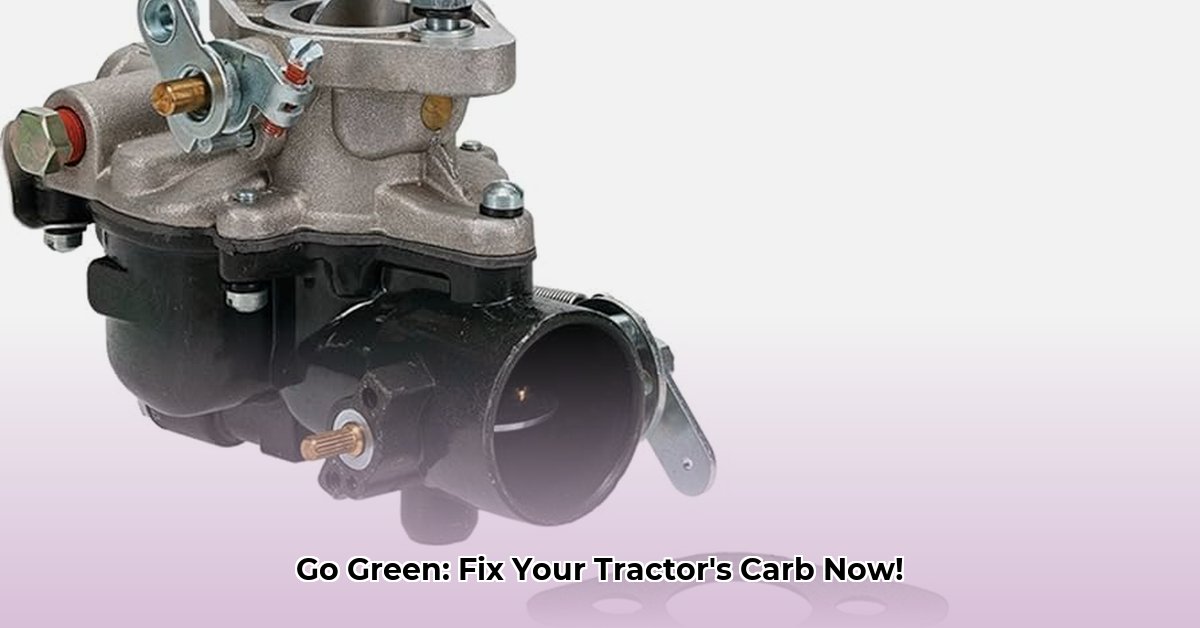
Tractor Carb Troubleshooting: A Sustainable Approach
Keeping your tractor running smoothly is crucial for productivity, and a well-maintained carburetor is key. But carburetor problems can lead to costly replacements. This guide offers a sustainable, cost-effective alternative: repairing your existing carburetor. This approach not only saves you money but also minimizes environmental impact by reducing waste. Did you know that repairing your carburetor can save you up to 75% compared to a new replacement? For Ford 8N tractor carb specifics, check out this helpful resource.
Identifying Carburetor Issues
Before starting any repair, a thorough inspection is paramount. Look for fuel leaks, worn parts, or unusual deposits. A sluggish engine response when accelerating is a significant indicator of carb trouble. Examine fuel lines for blockages – a simple fix can often resolve the problem.
Common Carburetor Problems and Solutions
Many carburetor issues have straightforward solutions. Let's examine some common problems:
Poor Fuel Delivery: This often stems from a clogged fuel filter or a dirty carburetor. Regular filter replacement and a thorough cleaning are usually sufficient. Replacing your fuel filter every six months is a simple preventative measure.
Rough Idling: A rough idle often points to a misadjusted idle mixture screw. Careful, incremental adjustments can resolve this. Remember, even slight alterations substantially impact engine performance.
Worn Parts: Over time, components like jets and gaskets wear out. Luckily, replacement parts are readily available and affordable in repair kits, offering a sustainable alternative to complete carburetor replacement.
Step-by-Step Carburetor Repair Guide
This section provides a detailed, numbered guide to effectively repair your tractor carburetor. Remember, safety is paramount; always disconnect the battery before working on any electrical or fuel system components.
Disconnect the Battery: This crucial step prevents electrical shock and accidental sparking.
Remove the Carburetor: Consult your tractor's manual for specific instructions on safely removing the carburetor. This step varies depending on the tractor model.
Disassemble the Carburetor: Carefully take the carburetor apart, documenting each component's position with photos or detailed diagrams. This preventative measure significantly aids reassembly.
Thorough Cleaning: Employ a carburetor cleaning solution and compressed air to remove dirt, grime, and varnish. A clean carburetor is essential for optimal performance.
Inspect and Replace Parts: Examine each component for wear or damage. Replace worn or damaged parts using a suitable repair kit.
Reassemble the Carburetor: Carefully reassemble the carburetor, ensuring all parts are correctly positioned. Refer to your documentation from step 3.
Reconnect and Test: Reconnect the battery and fuel lines. Start the engine and observe its performance. Address any lingering issues.
Rebuilding vs. Replacing: A Sustainable Choice
Deciding between rebuilding and replacing a carburetor involves several factors:
| Feature | Rebuilding | Replacing |
|---|---|---|
| Cost | Significantly cheaper | More expensive |
| Environmental Impact | Minimizes waste, more sustainable | Generates waste, less environmentally friendly |
| Skill Required | Intermediate mechanical skills needed | Minimal mechanical skills needed |
| Time Commitment | Requires more time | Quicker process |
Choosing to rebuild is not only cost-effective but also reduces waste and promotes sustainability. "Repairing a carburetor is a win-win," states Dr. Emily Carter, Professor of Chemical and Biomolecular Engineering at Princeton University, "It saves money and reduces environmental impact."
Sourcing Sustainable Parts
When selecting replacement parts, consider these eco-friendly options:
Rebuild Kits: Utilize readily available rebuild kits to reduce waste.
Domestic Sourcing (when feasible): Reduce transportation emissions by acquiring components from domestic suppliers.
Recycled Materials: Opt for parts made from recycled materials whenever possible.
Remember, responsible maintenance extends the life of your tractor and reduces your environmental footprint. Sustainable practices benefit both your wallet and the planet.